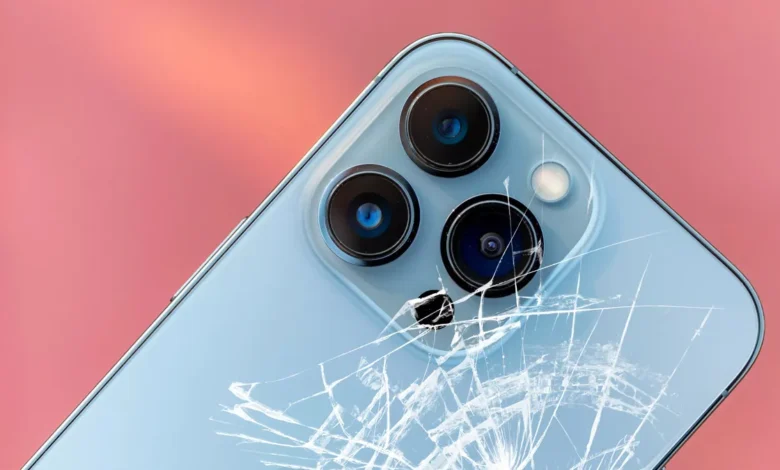Apple’s Repair Policies

When it comes to repairing Apple devices many users expect fast and reliable service. However there are times when Apple refuses to repair certain devices. This can be confusing especially for those who have never faced such an issue before. Apple has strict rules about what repairs it will or won’t do and sometimes these policies are not clear to the average user. This is why it’s important to understand Apple’s repair policies before you bring in your device for service.
Apple generally offers two types of repair services: under warranty and through AppleCare. However even if your device is within the warranty period or covered by AppleCare there are still instances when Apple refuses to repair your product. This can happen due to issues like unauthorized repairs or physical damage not covered by Apple’s terms. Understanding these rules is crucial to avoid unexpected situations.
Reasons Why Apple Refuses to Repair
There are several reasons why Apple refuses to repair a device. One common reason is when the device has been tampered with by someone other than Apple’s official technicians. If you’ve had your phone or computer fixed at a third-party store Apple might refuse to touch it because it can void your warranty. Apple prefers to repair only those devices that have not been modified by others.
Another reason for repair refusal is if the device has suffered from water damage or physical damage that Apple doesn’t cover. Sometimes cracks on the screen or signs of water exposure will cause Apple to reject a repair request. In such cases Apple might suggest buying a new device rather than repairing an old one. Understanding these reasons can help manage expectations and prevent disappointment.
Impact of Warranty and AppleCare on Repair Eligibility
Warranty and AppleCare are designed to give customers peace of mind by covering repairs. However if your Apple product is outside the warranty period or if your AppleCare coverage has expired Apple refuses to repair the device. Apple has strict guidelines about what is covered and what is not and once the coverage ends users must pay out-of-pocket for repairs.
In some cases even if your product is within the warranty period Apple may refuse to repair if they find damage caused by misuse. For example dropping your device or spilling liquids on it may not be covered under the warranty. This means that even with AppleCare certain types of damage are still not eligible for repair leaving customers frustrated. It’s important to read the fine print of your warranty to understand exactly what’s covered.
Role of Unauthorized Repairs in Repair Refusals
One of the biggest reasons why Apple refuses to repair a device is due to unauthorized repairs. If a third-party repair shop or technician has worked on your Apple device it could void the warranty. Apple wants to ensure that its products are repaired with the right parts and expertise so any third-party repair may lead to Apple refusing to service the device in the future.
While many third-party repair shops claim to fix Apple devices Apple insists that only its certified technicians are allowed to make repairs. This is because unauthorized parts may affect the performance of the device or could even cause further damage. It is important to know that if you get your device repaired by anyone other than Apple it could mean that Apple refuses to repair your device in the future.
Apple’s Stance on Third-Party Repairs
Apple has a strict policy when it comes to third-party repairs. The company believes that using non-official parts or services could compromise the quality and functionality of their products. This is why if you have taken your device to an unapproved service center Apple refuses to repair it later. Third-party repairs are often cheaper but they may not follow the same high standards as Apple’s official service.
In some regions Apple has started offering more flexibility with third-party repairs. However in most cases the company still sticks to its policy of rejecting repairs for devices that have been worked on by non-certified repair shops. If you want to keep your warranty intact and ensure that your device is repaired properly it is best to always visit Apple’s official stores or authorized repair centers.
Environmental and Legal Considerations Behind Repair Policies
Apple’s decision to refuse repairs can sometimes be linked to environmental concerns and legal issues. For example Apple may refuse to repair devices that contain hazardous materials or they might have environmental policies that limit certain types of repairs. Apple refusing to repair may also happen because of legal restrictions on parts or safety standards.
Additionally Apple has faced pressure from governments and environmental organizations to make its products more sustainable. As part of this the company may limit certain repairs to encourage customers to recycle old devices instead of fixing them. This could also be a reason behind why some users experience Apple refusing to repair their items as Apple wants to maintain eco-friendly practices.
Alternatives for Repairing Apple Products
If Apple refuses to repair your device there are other options to consider. One option is to visit an authorized third-party repair service that follows Apple’s standards. These repair shops might be able to fix your device using Apple-approved parts which could allow you to avoid paying for a brand-new replacement.
Another option is to look for DIY repair kits available online. While these kits can be cost-effective they are not for everyone and there’s a risk of further damaging your device if you don’t have the right skills. It’s important to weigh the risks before attempting any repairs yourself. Ultimately if you don’t want to go through the hassle of repair refusals buying a replacement might be the best choice.
What to Do if Apple Refuses to Repair Your Device
If Apple refuses to repair your device the first thing you should do is understand the reason behind it. If the refusal is due to damage that isn’t covered under warranty you may want to explore repair options through third-party services. However if Apple’s refusal is because of something you disagree with you can try contacting Apple’s customer service to discuss the issue further.
Sometimes Apple may offer a replacement device or suggest buying a refurbished model at a discounted price. It is worth asking about these alternatives especially if you feel that the repair refusal was unfair. Taking the time to communicate your concerns with Apple can sometimes lead to a resolution that you may not have expected.
Customer Feedback and the Future of Apple’s Repair Practices
Customer feedback is crucial for any company and Apple is no exception. Many customers have voiced their concerns about Apple refusing to repair their devices especially when it involves minor issues that could have been fixed. This has sparked debates about whether Apple should be more flexible with its repair policies and allow third-party repairs.
As technology evolves and repair regulations change Apple may be forced to reconsider its repair practices. Increasing pressure from consumer groups and environmental advocates might encourage Apple to offer more options for repairing devices without rejecting them so frequently. The future of Apple’s repair policies depends largely on how the company responds to these challenges.
Conclusion
Apple refuses to repair certain devices due to a mix of strict policies, warranty restrictions and concerns over product integrity. While it can be frustrating for users, understanding the reasons behind these decisions can help manage expectations. Apple has its own set of rules to protect the quality and longevity of its products but customer feedback may lead to future changes in repair policies.
Ultimately finding a balance between keeping customers happy and maintaining brand integrity is a challenge for Apple. With growing pressure from consumers Apple may adjust its repair services in the future. Until then users should be aware of what’s covered under their warranties and the risks of unauthorized repairs so they don’t face the disappointment of Apple refusing to repair their device.



